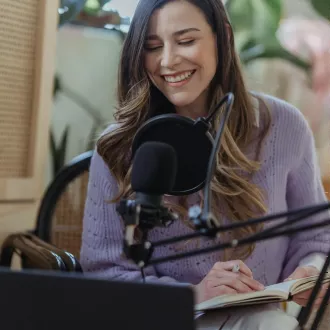Transcription Practical exercises to resolve conflicts in the couple.
In a couple's relationship, conflicts are inevitable. However, how conflicts are addressed and resolved can make the difference between strengthening the relationship or weakening it. Here, we will explore some practical exercises that can help couples resolve conflicts effectively and constructively.
Identifying emotions: The first step in resolving conflict is to identify and understand your own and each other's emotions. To do this, the following exercise can be done:
- Take a moment to individually reflect on the conflict and write down the emotions you experience. You can include words such as frustration, anger, sadness, disappointment, etc.
- Then, share your lists and talk about the emotions you each identified. Listen actively and try to understand how the other feels about the conflict.
- Once you have shared your emotions, try to find common ground and areas where you differ. This will help build empathy and mutual understanding.
Practice assertive communication: Assertive communication is key to healthy conflict resolution. The following exercise can help couples practice assertive communication:
- Choose a specific conflict that you want to address. Make sure you are both willing to participate in an open and respectful manner.
- Set a quiet time and place for the conversation. Avoid interruptions and make sure you have enough time to talk without rushing.
- During the conversation, use "I" instead of "you" to express your feelings and views. For example, instead of saying "you always do this wrong," you can say "I get frustrated when this happens."
- Practice actively listening to each other without interrupting. Allow each other time to express your opinions and feelings.
- Look for mutually satisfactory solutions. Try to find common ground and commit to working together to resolve the conflict.
Problem-solving technique: This technique is useful when conflicts are related to specific decisions or situations. Follow the steps below:
- Clearly identify the problem or conflict in question. Make sure you both have a clear and common understanding of the problem.
- Brainstorm ideas and possible solutions. Write down all options, even those that seem unrealistic or unconventional.
- Evaluate the options and consider the pros and cons of each. Discuss how the different solutions would affect each other and the overall relationship.
- Choose a solution that is mutually satisfactory. If you cannot agree on a specific solution, consider a compromise or combination of ideas that meets both of your needs.
- Implement the agreed-upon solution and follow up on its implementation. Agree on an action plan with concrete steps and assign clear responsibilities to ensure that the solution is carried out.
- Monitor and evaluate the progress of the solution. Regularly review how it is working and whether the desired results are being achieved. If necessary, make adjustments or modifications to the plan.
Practice empathy: Empathy is critical to understanding each other's perspectives and emotions during a conflict. The following exercise can help develop empathy in a couple:
- Choose a past or present conflict and take turns putting yourselves in each other's shoes. Each should express how he or she thinks the other feels in that situation and what emotions he or she might experience.
- Listen carefully to each other's perspectives and try to understand each other's point of view. Avoid judging or criticizing, and instead, focus on understanding and validating each other's emotions.
- After you have shared your perspectives, discuss how it felt to put yourself in the other person's shoes. Reflect on how this mutual understanding can help you find solutions and resolve conflicts more effectively.
Individual reflection time: Sometimes during a conflict, emotions can get too intense and make it difficult to communicate effectively. In such cases, it can be helpful to take some individual reflection time before continuing the discussion. The following exercise suggests how to do this:
- Agree on a period of time, for example, 30 minutes or an hour, in which you each take time to individually reflect on the conflict.
- During this time, engage in activities that help you relax and clear your mind, such as taking a walk, writing in a journal, or practicing breathing techniques.
- After the reflection time, return and resume the discussion with a calmer and more open mind. Share your reflections and emotions in a calm and respectful manner.
- Use active listening skills and empathy to understand each other's perspectives and work together toward a mutually satisfying solution.
conflict resolution exercises




